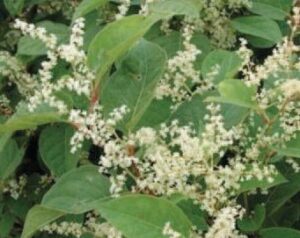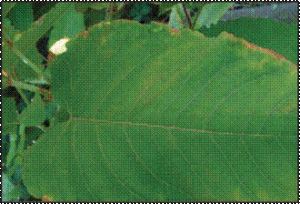It is famous for exploiting nooks and crannies in buildings and structures causing expensive repairs and devaluing houses as well as having a major impact on our natural flora.
But just when you thought you knew all there was to know about it, we thought we’d share with you the lesser-known fact that there is more than one type of Knotweed. This is because one of our forestry managers found Himalayan Knotweed recently … Yes there is more than one type of Knotweed!
Why is Knotweed an issue?
Japanese Knotweed, and other types of Knotweeds, were introduced to the UK as ornamental plants but have spread extensively in the wild. Knotweed’s rapid growth and formation of dense clumps crowd out and prevent the growth of native plants. The plant spreads rapidly, not only through progression of its root system but because any fragments of its stem or root will grow to form a new plant (a piece as small as 0.8 grams can regenerate).
This makes it a very difficult plant to eradicate. Japanese Knotweed in particular will grow in any type of soil no matter how poor and is often found along railways, riverbanks, roads and particularly on derelict sites.
Environmental harm
Knotweed shades out native plants by producing a dense canopy of leaves early in the growing season. Although Japanese Knotweed is not toxic to humans or animals, it offers a poor habitat for insects, birds and mammals.
Prosecution
It is illegal ‘to plant or otherwise encourage’ the growth of Japanese Knotweed. This could include cutting the plant or roots and disturbing or moving surrounding soil which may contain root material unless as part of an eradication process.
A handy ID sheet providing information on the identification of the different varieties, including Himalayan Knotweed and Lesser Knotweed can be downloaded using the QR code courtesy of the website: japaneseknotweed.co.uk. This also identifies species that look like knotweed but aren’t.

Different types of Knotweeds that you may encounter:

Above: Japanese Knotweed

Above: Giant Knotweed

Above: Himalayan Knotweed


